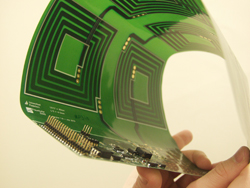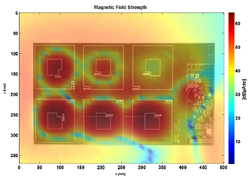Wireless Energy Supply


When considering the area of wireless communications, many different interfaces has been established, supporting the global strategy of Internet of Things. Recent issues of electronic devices show a growing need of wireless energy supply for portable devices and intelligent systems with embedded sensors and actuators. The energy supply system of current mobile equipment used in medicines (like implants), industrial production environments or consumer electronics (like smartphones) based on a cabled energy supply or chemical energy storage (like batteries) has to be maintained and regularly replaced or recharged. Thus, the most important advantage of a wireless energy transmission system is related to the spatial positioning freedom it offers, avoiding complicated chunky cabling and galvanic contacts. A further advantage of a contactless energy system is given by the possibility of encapsulating hermetically the systems, isolating them from unwanted external impacts (like dust, humidity, heat, etc.).
In order to supply a device wirelessly with energy, several feasible methods exit and rely on different physical concepts. In the case of a near-field transmission, the inductive and the capacitive couplings are recommended. For higher ranges, the energy transmission can take place using electromagnetic propagating waves. By considering the classical inductive coupling technology, coils and ferromagnetic materials are used in order to guide the magnetic field from the transmitter to the receiver. Such designs operating in low frequencies typically lead to bulky and heavy structures which restrict their integration within surfaces or limited volumes. A space-saving integration is achieved by using higher frequencies which allow the use of conventional printed circuit boards for the antenna design. At the same time, these higher frequencies offer the possibility of optimized efficiency combined with higher transmitted energy to be transmitted. Typical point-to-point RFID-based energy transmission systems (RFID or other systems) operate with frequencies ranging from 70 kHz up to 30 MHz. With such techniques, the transmittable energy is in the magnitude of 100 mW up to 100 W with an efficiency comparable to the charging and discharging cycle of accumulator systems.
The increase of both efficiency and positioning freedom of wireless energy transmitting systems taking into account the legislative electric smog limits is a top technological issue for the market penetration of wireless transmitting systems. Only an emission-reduced architecture can allow applications in close proximity to human beings or in EMC critical environments. To achieve this, the department SWS has developed an array of juxtaposed and interlaced coils which are controlled separately. By detecting the presence or absence of an authorized receiver, only the transmitting coil in front of a corresponding receiver is activated, increasing the transmission efficiency by minimizing the radiated unwanted fields. Based on this very innovative approach, the department SWS has built up a solid know-how in the area of wireless energy transmission which is offered as technological upgrade service in application domains like medical devices, industrial automatization and consumer electronics.
 Fraunhofer Institute for Electronic Nano Systems
Fraunhofer Institute for Electronic Nano Systems